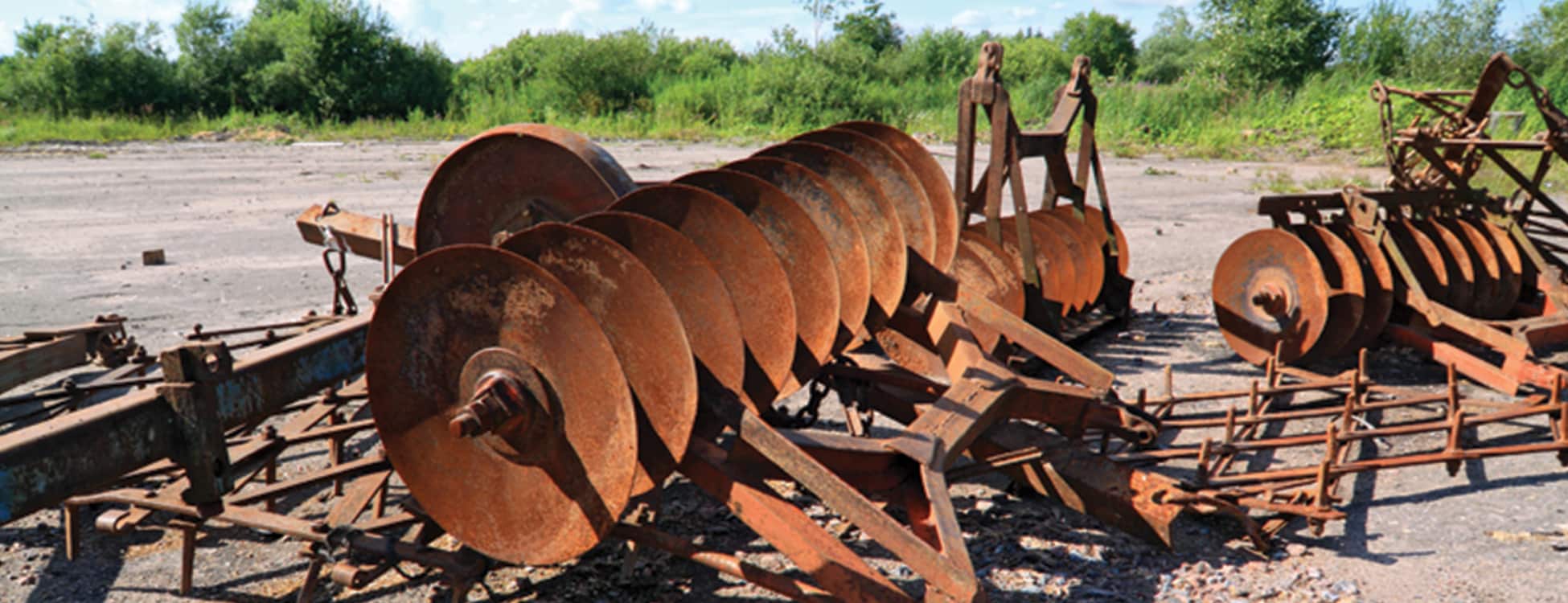Every farmer knows that eventually the expensive equipment that once gleamed bright green or orange when it was new will succumb to age, hard use and rust.
Farmers also know that there’s still a lot of life left in old rusted equipment, if they can just get it apart to repair it.
NOFA-VT and Vermont Technical College recently held a workshop on how to do just that.
Lying on the concrete floor of the shop at VTC’s dairy farm, next to a dark stain of penetrating oil, is the worn tine of an old farm plow.
It’s probably been close to half a century since someone applied a wrench to the rusted bolts that hold it together, and getting it apart to repair it is no easy task.
Workshop instructor Ron Wold looked on as Ben Crockett used a socket wrench to loosen a rusted bolt.
“Go backwards, tighten a little bit. Add a little oil. Go back the other way, and what that will do is clean some of the crud out of the threads,” Wold told Crockett.
Wold says lots of the things he’s done in life have prepared him to teach this class, including his experience as a welder, a blacksmith and … a French horn player.
“The reason I was interested in the French horn is the same reason I was interested in the other machines. The French horn is this cool, complicated, mechanical piece of plumbing,” he says.
“It really involves being a detective and improvising. There’s a lot of banging and a lot of head scratching.” – Mimi Arnstein, NOFA-VT Board
Schematic drawings or parts lists aren’t easy to find for equipment this old, so there’s a bit of puzzle solving involved in repairing it.
Mimi Arnstein, who serves on the NOFA-VT board, says previous workshops focused on engine repair, but this one involves a less exact science.
“It’s tricky to figure out how to teach a class on taking apart rusted metal because it really involves being a detective and improvising. There’s a lot of banging and a lot of head scratching,” she says.
It took a while to get the plow tine to come apart. In the end, it yielded under the extreme pressure of a large vice. Wold offered some suggestions on the finer points of dealing with a rusted part, but the answer was brute force.
“I hate that lesson but, yes,” Wold said with a laugh.
“It’s well-made. A lot of it is American steel that went under much more rigorous standards.” – Ben Crockett, Hudson Valley farmer
The tine belonged to an old plow owned by Justin Cote of Flywheel Farm in Woodbury. Cote is hoping to get more use out of it by replacing the worn parts that dig into the soil.
“It’s important to be able to change the feet on these so they can perform different tasks,” Cote explained.
Farm equipment is expensive – even the well-used implements like Cote’s rusted plow, which cost him $300.
Ben Crockett came from New York’s Hudson Valley to attend the workshop, bringing a tractor PTO shaft that’s seen better days. Crockett says the fact that equipment this old and rusty is still serviceable is testament to its quality.
“It’s well-made. A lot of it is American steel that went under much more rigorous standards. You had a lot more craftsmen then that really understood the difference because good steel and bad steel,” he says.
“Farmers are probably the last group of people in the non one-time-use lifestyle that most of us live. They actually do reuse all that that stuff that we would [consider] junk.” – Rachel Arsenault, VTC Institute for Applied Agriculture and Food Systems
There’s another principle at work here; one born of cost-saving necessity, perhaps, but still an important lesson that agricultural life is helping preserve.
“Farmers are probably the last group of people in the non one-time-use lifestyle that most of us live. They actually do reuse all that that stuff that we would [consider] junk and throw it out,” says Rachel Arsenault of the Institute for Applied Agriculture and Food Systems at VTC.
So, the next time you see a piece of farm equipment collecting rust and overgrown by weeds, don’t think of it as junk. It’s just waiting to be repaired.
Listen to the entire interview on VPR.
